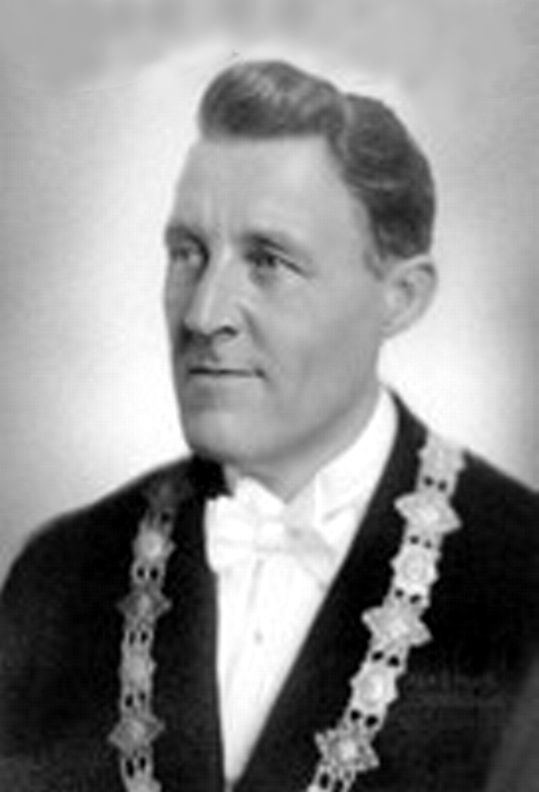Nationality Dutch Doctoral advisor Jacob Cardinaal Role Mathematician | Name Jan Schouten | |
 | ||
Born 28 August 1883Nieuwer-Amstel ( 1883-08-28 ) Died January 20, 1971, Epe, Netherlands Education Delft University of Technology Books Tensor analysis for physicists, Ricci-calculus, Pfaff's Problem and Its Generalizations Doctoral students | ||
Jan Arnoldus Schouten (28 August 1883 – 20 January 1971) was a Dutch mathematician and Professor at the Delft University of Technology. He was an important contributor to the development of tensor calculus and Ricci calculus, and was one of the founders of the Mathematisch Centrum in Amsterdam.
Contents
Biography
Schouten was born in Nieuwer-Amstel to a family of eminent shipping magnates. He started to study electrical engineering in 1901 at the Delft University of Technology, where he graduated in 1908. During his study he had become fascinated by the power and subtleties of vector analysis. After a short while in industry, he returned to Delft to study Mathematics, where he received his Ph.D. degree in 1914 under supervision of Jacob Cardinaal with a thesis entitled Grundlagen der Vektor- und Affinoranalysis.
Schouten was an effective university administrator and leader of mathematical societies. During his tenure as professor and as institute head he was involved in various controversies with the topologist and intuitionist mathematician L. E. J. Brouwer. He was a shrewd investor as well as mathematician and successfully managed the budget of the institute and Dutch mathematical society. He hosted the International Congress of Mathematicians in Amsterdam in early 1954, and gave the opening address. Schouten was one of the founders of the Mathematisch Centrum in Amsterdam.
Among his PhD candidates students were Johanna Manders (1919), Dirk Struik (1922), Johannes Haantjes (1933), Wouter van der Kulk (1945), and Albert Nijenhuis (1952).
In 1933 Schouten became member of the Royal Netherlands Academy of Arts and Sciences.
Schouten died in 1971 in Epe. His son Jan Frederik Schouten (1910-1980) was Professor at the Eindhoven University of Technology from 1958 to 1978.
Grundlagen der Vektor- und Affinoranalysis
Schoutens dissertation applied his "direct analysis," modelled on the vector analysis of Josiah Willard Gibbs and Oliver Heaviside to higher order tensor-like entities he called "affinors." The symmetrical subset of affinors were tensors in the physicists sense of Woldemar Voigt.
Entities such as axiators, perversors, and deviators appear in this analysis. Just as vector analysis has dot products and cross products, so affinor analysis has different kinds of products for tensors of various levels. However, instead of two kinds of multiplication symbols, Schouten had at least twenty. This made the work a chore to read, although the conclusions were valid.
Schouten later said in conversation with Hermann Weyl that he would "like to throttle the man who wrote this book." (Karin Reich, in her history of tensor analysis, misattributes this quote to Weyl.) Weyl did, however, say that Schouten's early book has "orgies of formalism that threaten the peace of even the technical scientist." (Space, Time Matter, p. 54). Roland Weitzenbock wrote of "the terrible book he has committed."
Levi-Civita connection
Schouten independently discovered in 1915 what is now known as the Levi-Civita connection. Schouten's derivation is generalized to many dimensions rather than just two, and Schouten's proofs are intrinsic rather than extrinsic, unlike Tullio Levi-Civita's. Despite this, since Schouten's article appeared almost a year after Levi-Civita's, the latter got the credit. Schouten was unaware of Levi-Civita's work because of poor journal distribution and communication during World War I. Schouten engaged in a losing priority dispute with Levi-Civita. Schouten's colleague L. E. J. Brouwer took sides against Schouten. Once Schouten became aware of Ricci's and Levi-Civita's work, he embraced their simpler and more widely accepted notation. Schouten also developed what is now known as a Kahler manifold two years before Erich Kahler. Again he did not receive full recognition for this discovery.
Works by Schouten
Schouten's name appears in various mathematical entities and theorems, such as the Schouten tensor, the Schouten bracket and the Weyl–Schouten theorem.
He wrote Der Ricci-Kalkul in 1922 surveying the field of tensor analysis.
In 1931 he wrote a treatise on tensors and differential geometry. The second volume, on applications to differential geometry, was authored by his student Dirk Jan Struik.
Schouten collaborated with Elie Cartan on two articles as well as with many other eminent mathematicians such as Kentaro Yano (with whom he co-authored three papers). Through his student and co-author Dirk Struik his work influenced many mathematicians in the United States.
In the 1950s Schouten completely rewrote and updated the German version of Ricci-Kalkul and this was translated into English as Ricci Calculus. This covers everything that Schouten considered of value in tensor analysis. This included work on Lie groups and other topics and that had been much developed since the first edition.
Later Schouten wrote Tensor Analysis for Physicists attempting to present the subtleties of various aspects of tensor calculus for mathematically inclined physicists. It included Paul Dirac's matrix calculus. He still used part of his earlier affinor terminology.
Schouten, like Weyl and Cartan, was stimulated by Albert Einstein's theory of general relativity. He co-authored a paper with Alexander Aleksandrovich Friedmann of Petersburg and another with Vaclav Hlavaty. He interacted with Oswald Veblen of Princeton University, and corresponded with Wolfgang Pauli on spin space. (See H. Goenner, Living Review link below.)
Publications
Following is a list of works by Schouten.
